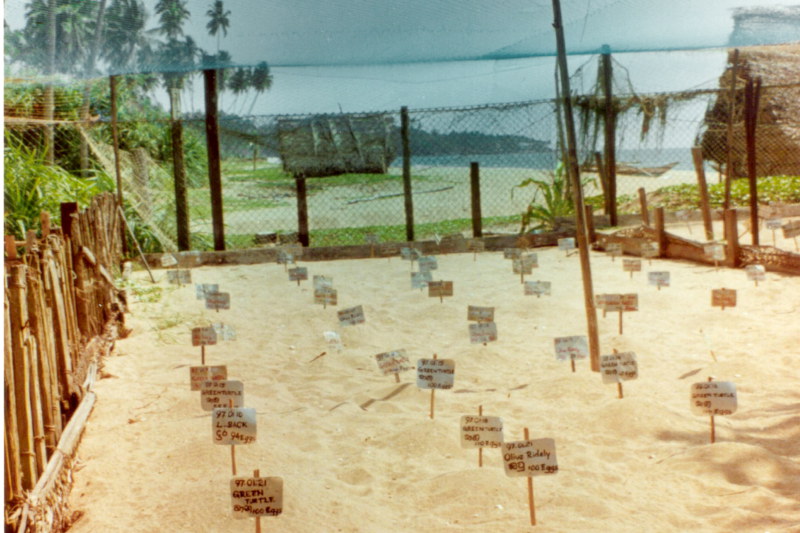On a whim I decided to go to Kosgoda to see the turtle hatcheries. Getting there was no issue: I headed to the train station, bought a ticket and hopped on the train. Somehow I always manage to show up when the train is just arriving. I sat with a man from London who laughed at and loved everything, this was his second visit to Sri Lanka and he extended his visa for another 60 days.
Once at the Aluthgama station I got off and walked across the bridge into Benota. I sat in the Gondola Restaurant and had lunch to collect myself and devise a plan of attack. I had the “toma toe sand witches” and talked to an overly keen waiter and after my “sand witch” I started to walk from Bentota to Kosgoda.
Once in Kosgoda no one spoke English so I drew a little picture of a turtle on a piece of paper in an attempt to ask the locals how to get to the hatchery. Once they say my crude little image they knew my destination and sent me in the right direction. The fee to get into the hatchery is 50 rupees, all of which goes towards the collection of eggs. The turtles in the hatchery are the loggerhead and leather back turtles and in Sri Lanka few turtles survive because they are eaten by wild dogs before they have a chance to hatch. The hatchery was set up to give the turtles a chance to survive.
The tanks for the baby turtles contained in little cells full of anxious and ambitious turtles waiting for their chance to get to the ocean. The turtles only stay in the hatchery for a few days before they are released into the wild. Originally the eggs are buried by turtles along Sri Lanka’s beaches and boys go out and collect as many eggs as they can. Those that are found are then buried in an area designed to keep dogs out. When the eggs hatch the turtles are put into the holding tanks for 48 hours and then released into the wild. Tourists can release turtles into the wild for a nominal fee. As I wandered through the area where eggs lay in the sand I found tiny little tracks left by ambitious baby turtles as they scrambled to make it to the ocean.
Added 2008-04-18: the hatcheries and turtle conservation effort were destroyed on December 26, 2004 by the Indian Ocean tsunami. Thanks to private donations, Sri Lankans have since rebuilt a bigger and better hatchery.
